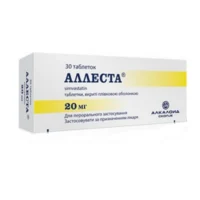Description
Pangastro (Pantoprazole) Gastroresistive Tablets 40 mg. №14
Ingredients:
- Each tablet contains 40 mg of pantoprazole.
Dosage:
- The recommended dosage is one tablet daily, swallowed whole with water, preferably before a meal.
Indications:
- Pangastro tablets are indicated for the treatment of gastroesophageal reflux disease (GERD), ulcers, and Zollinger-Ellison syndrome.
Contraindications:
- Do not use Pangastro if you are allergic to pantoprazole or any other ingredients in the tablets.
Directions:
- Take Pangastro exactly as prescribed by your healthcare provider. Do not exceed the recommended dosage.
Scientific Evidence:
Pangastro containing pantoprazole is a proton pump inhibitor that works by reducing the amount of acid produced in the stomach. Studies have shown that pantoprazole is effective in treating various acid-related disorders, providing relief from symptoms and promoting healing of the esophagus and stomach lining.
Additional Information:
- Pangastro tablets have been well-tolerated in clinical trials, with common side effects including headache, diarrhea, and abdominal pain. It is important to follow the prescribed dosage and duration of treatment to achieve the best results.
- Compared to other proton pump inhibitors, pantoprazole has shown similar efficacy in the treatment of GERD and ulcers but may have a different side effect profile. Consult your healthcare provider to determine if Pangastro is the right choice for you.





